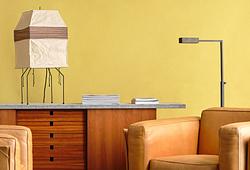A famille verte Gu shaped vase, Qing dynasty, Kangxi (1662-1722).
Composed of three sections, rising from a flared slightly tapering base to a more rounded mid-section and again to a wide-open mouth. The decoration is in the form of four rows of framed windows, which are filled, with scenes of flowers, birds, mythical animals and landscapes. On the lower section are peach-shaped and rectangular panels with scenes of budding flowers and rocks. The mid-section contains alternating roundels of mythical beasts and butterfly amongst flowers. The neck displays a tiger, qilin and butterflies amongst flowers. “Cracked ice “ and diaper cells in under glaze red encircle the rim and upper middle section and key fret bands in the lower. Height 48 cm.
Restored.
Provenance
Purchased from the Estate of Peter Terian, Sotheby’s New York, January 2009.
Peter Terian was a co-founder of Rallye Motors, one of North America’s most prestigious car dealerships and served as its president until his death in 2002. He was a renowned collector of art, who frequently loaned significant pieces to museums worldwide, including the Metropolitan Museum of Art, where he served as a William Cullen Bryant fellow.
The Avalon Collection.
This collection, which in the main focuses on the Interregnum and Kangxi periods has been both carefully and sensitively formed over the last twenty-five years. The collector, a member of the English Oriental Ceramic Society, has assembled the collection with an eye for provenance whilst purchasing from old European collections, well-established antique dealers and at auction.
Academically, the pieces have been well researched both in terms of their symbolism and narrative themes. In many instances the imagery on the pieces has been referenced to episodes in the romantic and historic novels of Chinese mythology, which were used extensively in the decoration of seventeenth century Chinese porcelain.
Literature
For an identical example see “ Collected in America: Chinese Ceramics from The Metropolitan Museum of Art”, Christies New York, 15 September 2016, Lot 904.
More information
The shape of the vase is based on the archaic bronze vessel known as the Gu, which was originally used to offer sacrificial wine to one’s ancestors during the early Shang and Western Zhou periods.

















































